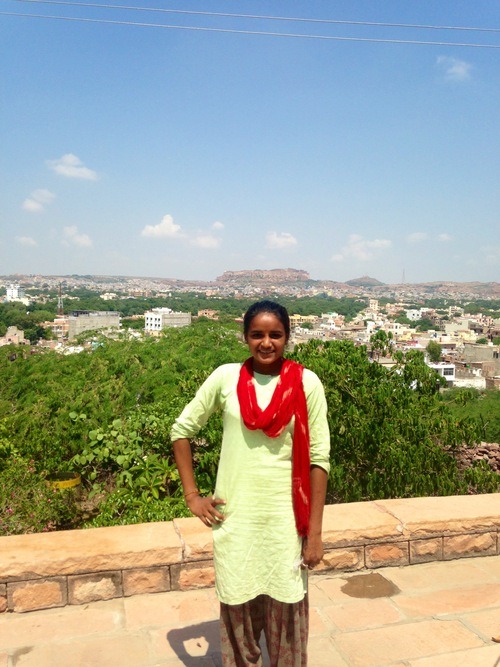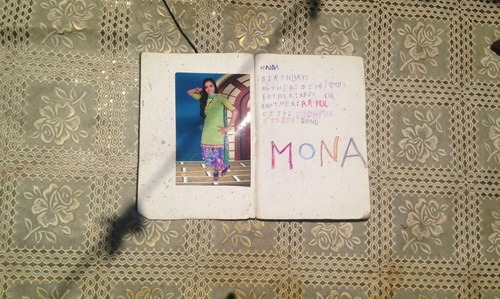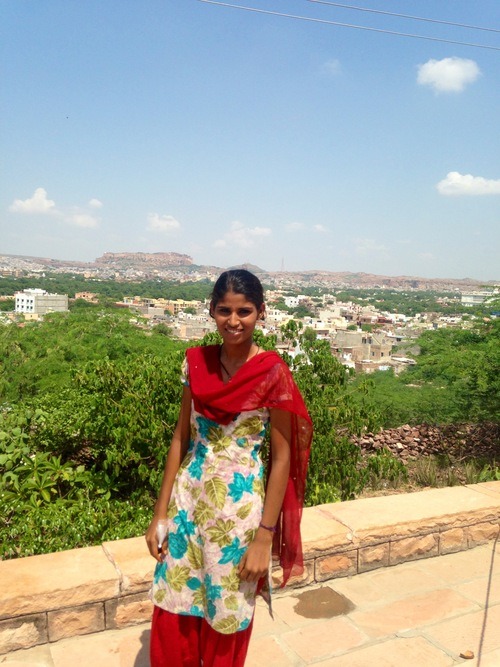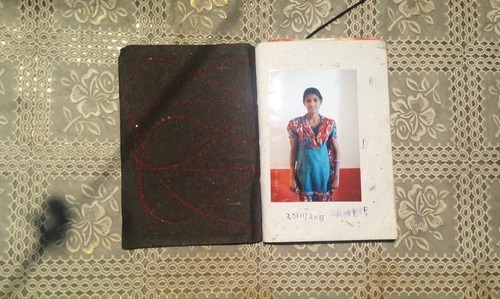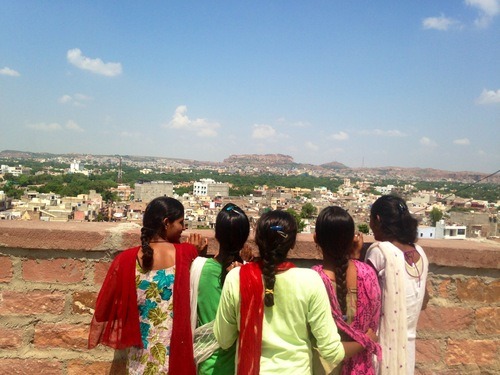.JPG) |
| Yellowing |
When I step outside, the soles of my
shoes noisily crunch upon scattered yellowing leaves; I pick one up
and twirl it around and around, my eyes idly locating the point where
green becomes yellow, life blurs into decay.
However, these leaves are not fall
leaves; in fact, I am living nowhere close to a place where deciduous
trees flourish. I am in New Delhi, India and these are faux fall
leaves only in my eyes. It is as if they have fallen and turned
yellow simply to assuage a curious kind of yearning and homesickness
I am experiencing for the last place I called home, the United
States.
A year ago, I was standing in my
Pittsburgh apartment balcony one morning, awe-struck in admiration at
how the tree outside had seemingly turned blood-red over night. In
the clear, sharp autumn sunlight, it gleamed deeply and brightly, the
sidewalk below thickly carpeted with fallen red leaves. I remember
scooping a few up and decorating my living room with them, mirroring
the fall landscape outside. These days, as I glimpse one stunning
image after another of fall foliage on social media, I can't help but
reminisce about and miss America even though I am now technically in
my homeland.
Perhaps, that is what lies at the heart
of the matter: I am in my homeland...but not my home.
Having been born outside of and spent
the majority of my life away from India, I and indeed, many of
India's Currents readers are very well accustomed to being
familiar with what it is to be nostalgic for the homeland. It is
ever-present in the food we consume, the cinema that we watch, the
clothes we wear, the compatriots whom we gravitate to, and the
shrines, religious or otherwise we build within our home, in our
quest to accept and reconcile with the fact that we are ultimately
not in our homeland.
Even though I lived in India only as a
small child and that too very briefly before moving to the place I
would (and still call) home for the next many years, Oman, I would
nevertheless find myself missing its sheer presence every time we
returned from there post vacations. When I moved to the States, I
would find myself acutely yearning for my home-town, Jodhpur, of all
places, especially during the artic winters. Glimpsing the
snow-blanketed landscape and nature at its most minimal, memories of
the buzzing streets, vibrant festivals, iridescent clothing, and food
would almost obsessively invade my mind. Even though technology
allowed me to somewhat fulfill these above mentioned yearnings, it
was never enough. To employ a food metaphor, I could recreate India
in my plate but it was as if a mechanical, unfeeling had wrought it.
And yet, after I had arrived in India
few months ago and began the gradual process of calling it home, I
found myself in a peculiar dilemma; up till now, I had always
essentially perceived India as a vacation space. I would arrive
here, spend a few hectic weeks travelling around the country, and
then, as vacation neared its end, inevitably begin missing Oman or
wherever I happened to be living then. It was time to go back, I
would tell myself. However, this time round, I realised I was no
longer on a holiday: I was here to stay.
When I arrived in my new home, Delhi, I
began to anchor myself to the notion of permanently living in India,
as opposed to being a migratory bird. It was then I began to realise
how much I missed the States. What also struck me was how the very
things in India that used to delight or provoke curiosity or
stimulate my attention made me almost blasé; what I had once yearned
for was now omnipresent for my consumption, any time, any day. It
slowly dawned upon me that I was in the curious situation of being
homesick in what was ostensibly my homeland. The truth was that it
never had really been my homeland: it was merely yet another new home
in the caravan of countries that I had inhabited through my life.
Would it ever feel like home? I
asked myself.
.JPG) |
| Nature's Child: Street-art in Shahpur Jat |
A few days ago, I started to see how my
question could be answered. I found myself at Shahpur Jat, a
residential area in South Delhi, which was the subject of a pulsating
street art festival earlier this year. My interest in street art had
begun in Pittsburgh itself and I was now eager to experience street
art in a Delhi urban context. When I arrived at Shahpur Jat, the
almost-winter sun was disappearing into the dusk air. As I wandered
through the narrow bylanes, excitedly spotting and admiring the fun,
quirky, iridescent murals, I was simultaneously aware of an
atmosphere entirely specific to the area. I passed by crowded biryani
and tea and samosa shops, cute boutiques, peanut sellers roasting
peanuts, fish for sale, and children and puppies alike playing in the
streets while their elders sat outside rainbow hued doors and
gossiped.
.JPG) |
| Shahpur Jat streets |
The deeper I explored the maze of lanes, shops, and
houses, I felt as if I was transplanted in a similarly vibrant
network of gullies in old Jodhpur, which I had so often missed when
living in Oman or States. In fact, at one point, I glanced up to see
an ochre-hued house draped with freshly washed carpets – and that
sight immediately took me to Oman.
.JPG) |
| An Oman-looking building |
I had come looking for art in Shahpur
Jat – but what I did not anticipate finding was home.
I moved to the country of my roots...to
put down new roots. While it will be time before I can truly
acknowledge the home in my homeland, the project focuses on looking
with your eyes open, rather than remaining lost in the rose tinted
spectacles of nostalgia. Also, significantly, knowing where to look.
And one dusk evening, as you are wolfing down warmly roasted peanuts
and smelling woodsmoke in the air, you will start thinking, that,
yes, perhaps, this place could be my home, after all.
**
This essay originally appeared here in India Currents
.JPG)
.JPG)
.JPG)
.JPG)
.JPG)
.JPG)
.JPG)
.JPG)
.JPG)
.JPG)
.JPG)
.JPG)
.JPG)
.JPG)
.JPG)
.JPG)

.JPG)
.JPG)
.JPG)
.JPG)

